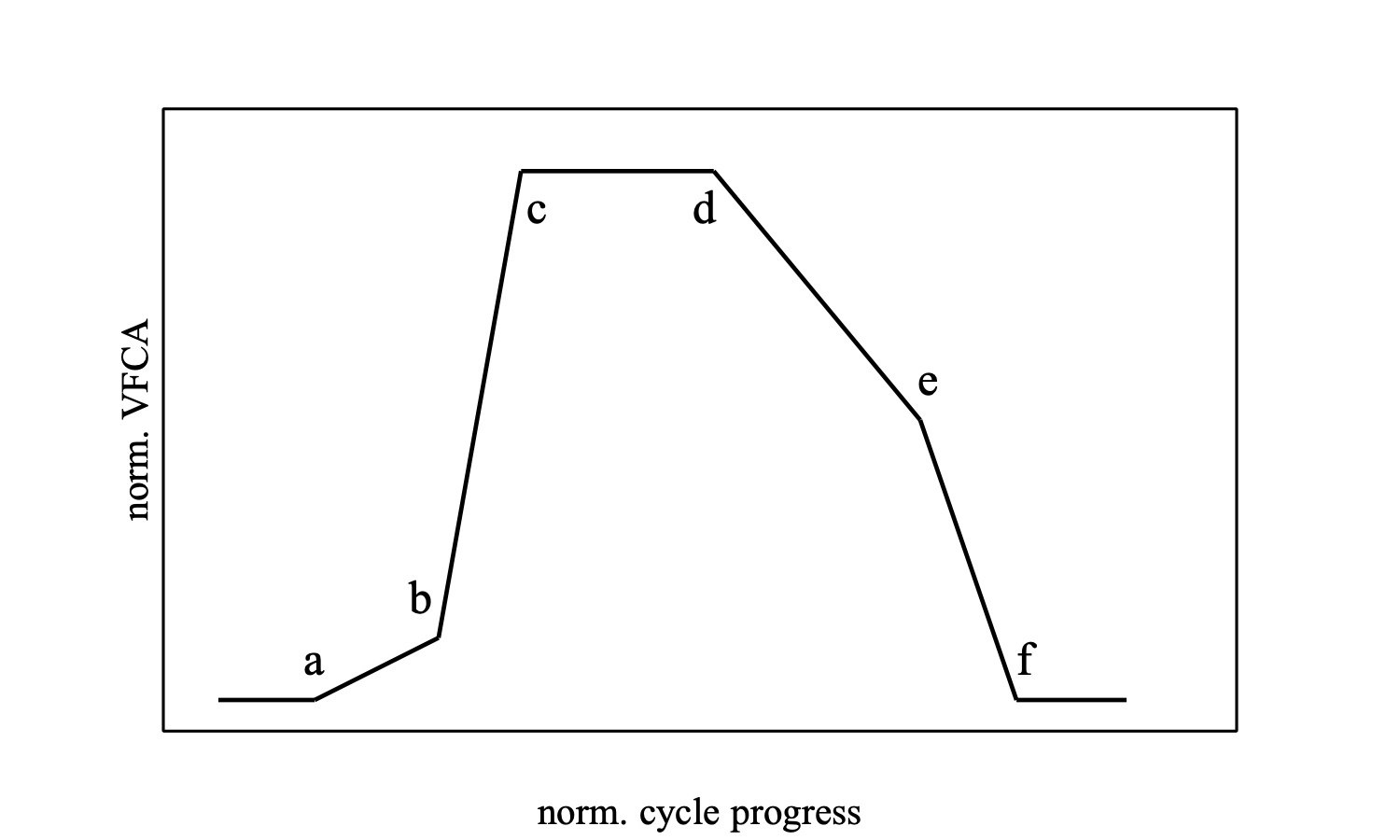
|
One of the types of objects in Praat. The Electroglottogram represents changes in vocal fold contact area during vocal fold vibration.
The following picture shows part of one cycle of a stereotypical (stylized) waveform, with landmarks.

The orientation of the signal is in the (now) conventional way where the positive y-direction signals larger vocal fold contact area (VFCA). The landmarks refer to:
From standard electroglottography measurements generally a multi-channel sound file results. One channel of this file contains the recorded electroglottogram, the other the recorded sound. You can extract the electroglottogram with the Extract Electroglottogram... command that you will find under the Sound: Convert - menu.
Getting exact timing of the glottal closure instants (GCI) and glottal opening instants (GOI) from the Electroglottogram is problematic because as Herbst (2019) notes: the vocal folds do not vibrate as a uniform mass. Rather, their vibration is characterized by phase differences along both the inferior–superior and anterior–posterior dimensions. These phase differences cause time-delayed contacting and de-contacting of the vocal folds along the respective axes. There is thus no specific instant of glottal closing and opening, but rather an interval during which the closing and opening, respectively, occur.
© djmw 20190829